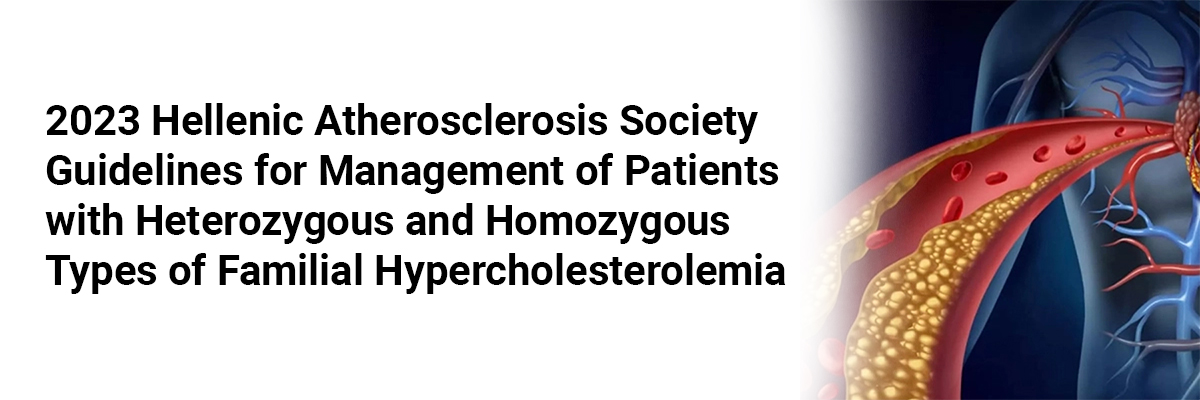
2023 Hellenic Atherosclerosis Society guidelines for management of patients with heterozygous and homozygous types of familial hypercholesterolemia
Atherosclerotic cardiovascular disease (ASCVD) is the leading cause of mortality globally, and dyslipidemia is considered as a significant risk factor for the development of ASCVD. Hence, prompt diagnosis and appropriate management of dyslipidemia plays a critical role in the prevention and treatment of ASCVD.
Among the specific forms of dyslipidemia, heterozygous familial hypercholesterolemia (HeFH) is a common autosomal dominant genetic disease, that affects approximately 1 in 200–300 adults. It is caused by mutations in one of the genes critical for LDL receptor-mediated catabolism of LDL, and these patients have increased incidence of early onset ASCVD.
Following are the recommendations for the assessment and management of dyslipidemia in patients with HeFH:
- The Dutch Lipid Clinic Network criteria should be used to diagnosis HeFH
- First-degree relatives of patients with HeFH must be assessed for the presence of FH
- In patients with HeFH and established ASCVD, diabetes or stage 4–5 CKD, an LDL-C target <55 mg/dL and a ≥50% reduction from baseline LDL-C levels is recommended
- In patients with HeFH without established ASCVD or other major risk factors, the LDL-C target is < 70 mg/dL
- To reach the LDL-C target, the most potent statins at the highest tolerable dosage (atorvastatin 40–80 mg or rosuvastatin 20–40 mg), ezetimibe, and PSCK9 inhibitor (if required) must be administered.
Another specific form of dyslipidemia is homozygous familial hypercholesterolemia (HoFH) occurs in one of 160,000–300,000 births. It is typified by extensive xanthomas, marked premature and progressive ASCVD and TC > 500 mg/dL.
The recommendations for LDL-C targets in patients with HoFH are mentioned below:
- HoFH patients should achieve an LDL-C <70 mg/dL and ≥50% decrease from baseline In primary prevention
- In individuals at very high risk an LDL-C reduction of ≥50% from baseline and an LDL-C goal of <55 mg/dL (<1.4 mmol/L) should be considered in primary prevention
- While an LDL-C reduction of ≥50% from baseline and an LDL-C goal of <55 mg/dL (1.4 mmol/L) is recommended in secondary prevention.
Source: Katsiki N, Filippatos T, Vlachopoulos C, Panagiotakos D, Milionis H, Tselepis A, Garoufi A, Rallidis L, Richter D, Nomikos T, Kolovou G, Kypreos K, Chrysohoou C, Tziomalos K, Skoumas I, Koutagiar I, Attilakos A, Papagianni M, Boutari C, Kotsis V, Pitsavos C, Elisaf M, Tsioufis K, Liberopoulos E. Executive summary of the Hellenic Atherosclerosis Society guidelines for the diagnosis and treatment of dyslipidemias - 2023. Atheroscler Plus. 2024 Feb 17;55:74-92. doi: 10.1016/j.athplu.2024.01.004. PMID: 38425675; PMCID: PMC10901915.













Please login to comment on this article